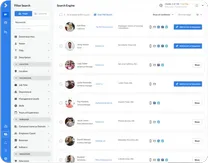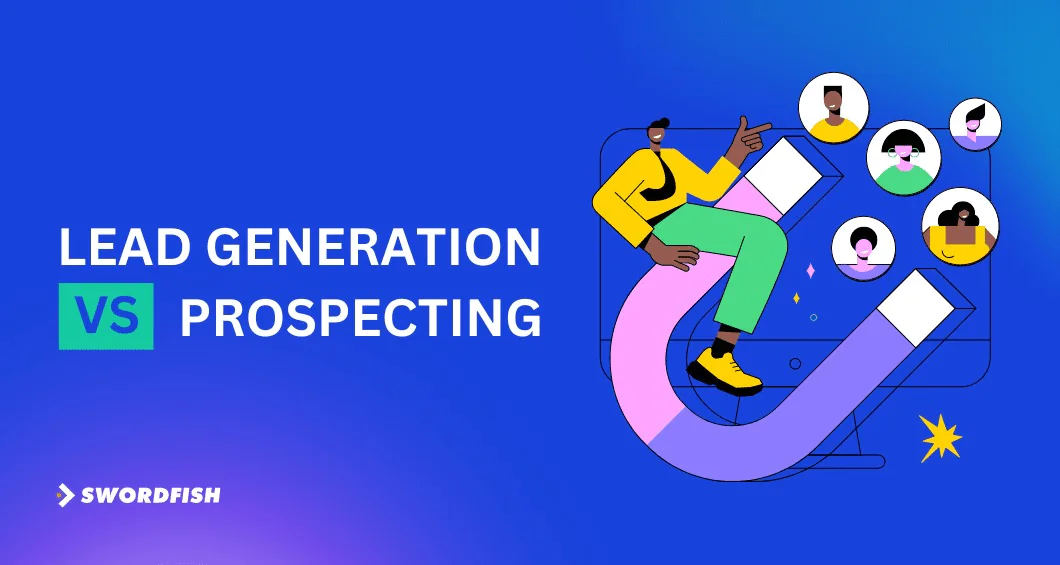
Finding and nurturing new potential customers is vital for business growth. In fact, 87% of marketing and sales professionals say collaboration is critical for business growth. Yet, most companies don’t understand the difference between lead generation vs prospecting. What approach works best?
Lead generation involves attracting and converting prospects, which is ideal for broad customer base building. Prospecting is identifying and contacting potential customers, great for personalized engagement. Both are key for a comprehensive sales strategy and higher conversion rates.
Stay with us as we’ll clearly define lead generation and prospecting, explain the challenges of each, and their differences. You’ll learn proven tactics to combine both strategies to optimize your sales.
Prospecting vs Lead Generation: Comparison Table
Understanding the differences between lead vs prospect is key to effective sales and marketing strategies. Here’s a detailed comparison —
| Aspects | Prospecting | Lead Generation |
|---|---|---|
| Definition | Actively searching for potential customers who fit the ideal customer profile. | Attracting and capturing the interest of potential customers. |
| Process | Involves researching and targeting individuals or businesses that align with your ideal customer profile. | Identifies target audience, determines effective channels, and creates compelling content and offers. |
| Approach | Proactive, targeted outreach to identify potential customers. | Captures potential customers’ interest and contact information through marketing tactics. |
| Focus | Identifying and qualifying prospects who have the potential to become paying customers. | Generating valuable leads that have the potential to become paying customers. |
| Methods | Cold email, cold calling, cold social media outreach. | Content creation, landing page optimization, social media strategies. |
| Communication | Two-way communication, focusing on the customer. | One-way communication, focusing on the product. |
| Engagement | Personalized and one-to-one engagement. | Little immediate engagement beyond automated responses. |
| Tools | Utilize tools like CRM for personalization and tracking. | Employs lead prospecting tools for managing leads and nurturing. |
| Outcome | Building relationships with prospects, opening the way for future sales opportunities. | Continuous optimization and refinement to drive business growth. |
What is Lead Generation?
Lead generation is a way for businesses to create interest in their products or services. It’s about finding potential customers, known as leads, and getting them interested in what the business offers. This process has changed a lot recently, especially with new online and social media methods.
The main goal of lead generation is to help companies find people who might buy their products or services. In fact, approximately half of their budget is allocated to lead generation by 53% of marketers.
Businesses collect contact details from these leads, usually through a form. Then, they use different marketing techniques to keep these leads interested. The aim is to turn them into actual customers. This step is crucial for businesses to grow their customer base and increase sales.
Key Challenges in Lead Generation
HubSpot highlights that generating leads is a key focus for marketers. Why is this important? It’s simple: sales teams are always on the lookout for better and more leads. If a lead doesn’t meet their criteria, they quickly move on. This means that as a marketer, your role is crucial in providing a steady stream of leads.
Before diving into your lead generation strategy, consider these straightforward questions:
- What challenges do your potential customers face? What are their main concerns?
- Which platforms do they use? Where do they search for business growth information?
- What type of content resonates with them, and how do they prefer to engage with it?
- What’s their experience on your website? How can you effectively turn a visitor into a lead?
Answering these questions sets you up for success in your lead generation efforts. For a deeper dive into effective methods, explore these proven b2b prospecting strategies that can improve your approach.
Top 5 Lead Generation Tips
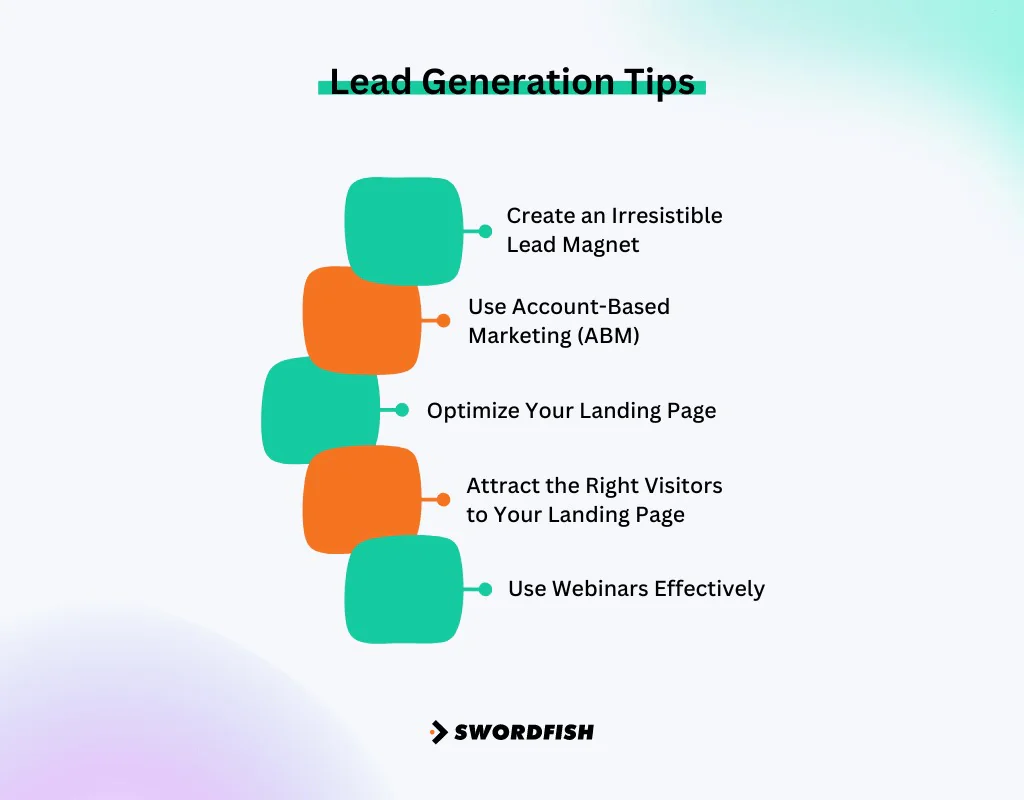
Looking to increase your leads? Here are three straightforward tips:
Create an Irresistible Lead Magnet
Understand this – people will only share their contact details if they’re getting something truly valuable in return. So, create a lead magnet that’s so good people would normally pay for it, and then offer it for free.
Use Account-Based Marketing (ABM)
ABM is a highly effective lead generation strategy. It targets specific accounts, making it a focused approach. Plus, 87% of marketers report that ABM gives a higher return on investment compared to other methods.
Optimize Your Landing Page
Landing pages have been key in online marketing for years. To make yours effective, keep it simple and avoid clutter. Your landing page should grab attention and make visitors curious.
It should highlight the value you offer but leave enough unsaid to make them want to learn more. Remember, if visitors know everything upfront, they might not feel the need to share their contact information.
Attract the Right Visitors to Your Landing Page
Traffic to your website can be of two types: high-quality traffic from your ideal customers and low-quality traffic from others. Focus on attracting high-quality visitors to your landing page. It ensures that the people who download your lead magnet are more likely to become customers.
Use Webinars Effectively
Webinars are a powerful tool for lead generation to get information. To make the most of webinars, follow these steps —
- Decide who to invite.
- Choose the topics you’ll cover.
- Determine how in-depth you’ll go on each topic.
- Set the length of the webinar.
- Invite guest speakers who are relevant to the topic.
- Pick the right channels to promote your webinar.
- Choose a suitable date and time for the live event.
- Highlight the key points on your registration page.
By focusing on these elements, you can use webinars as an effective lead generation strategy.
What is Prospecting in Sales?
Prospecting is a part of sales where businesses look for potential customers, called prospects. Here, the goal is to create a list of potential customers and then contact them regularly to turn them into actual customers.
In prospecting, sales teams focus on finding people who might not know about the company or its products. They use methods like phone calls, emails, and social media to reach out to these people. This approach is more direct and personal.
Salespeople talk one-on-one with prospects to understand their needs and offer products or services that meet those needs. In that case, a lead generation guide are useful for beginners and experts alike, covering all aspects of lead generation.
Key Challenges in Sales Prospecting
Prospecting is a regular task for salespeople. The 2021 Sales Enablement Report by HubSpot found that 40% of salespeople see prospecting as the toughest part of their job. It’s more challenging than closing deals (36%) and qualifying leads (22%).
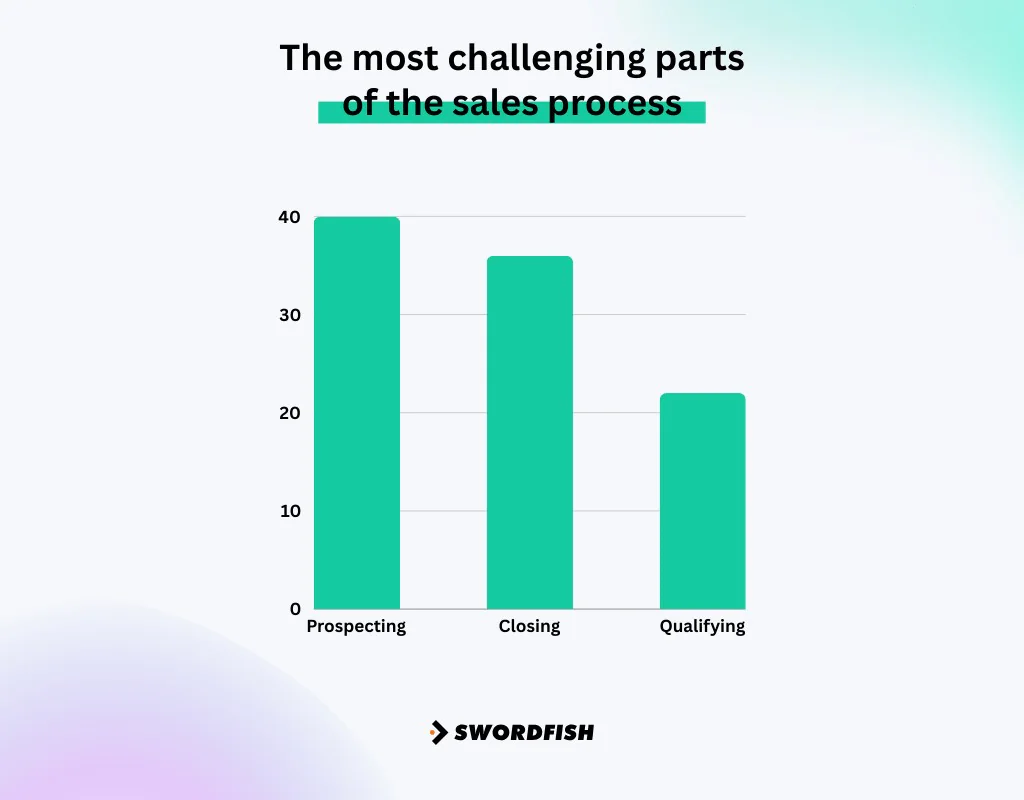
Why is prospecting so tough? It requires a customized approach, which is time-consuming. Automated emails alone won’t bring in prospects effectively. Also, identifying and tracking criteria to determine if someone is a genuine prospect is difficult.
Sellers who perform well typically dedicate around 6 hours each week to researching their potential customers. This is where CRM software becomes valuable.
A CRM system stores and processes information about potential customers, either manually or automatically. If you record all your interactions with a prospect in the CRM, it can also show how they progress through your sales funnel.
Top 5 Sales Prospecting Tips
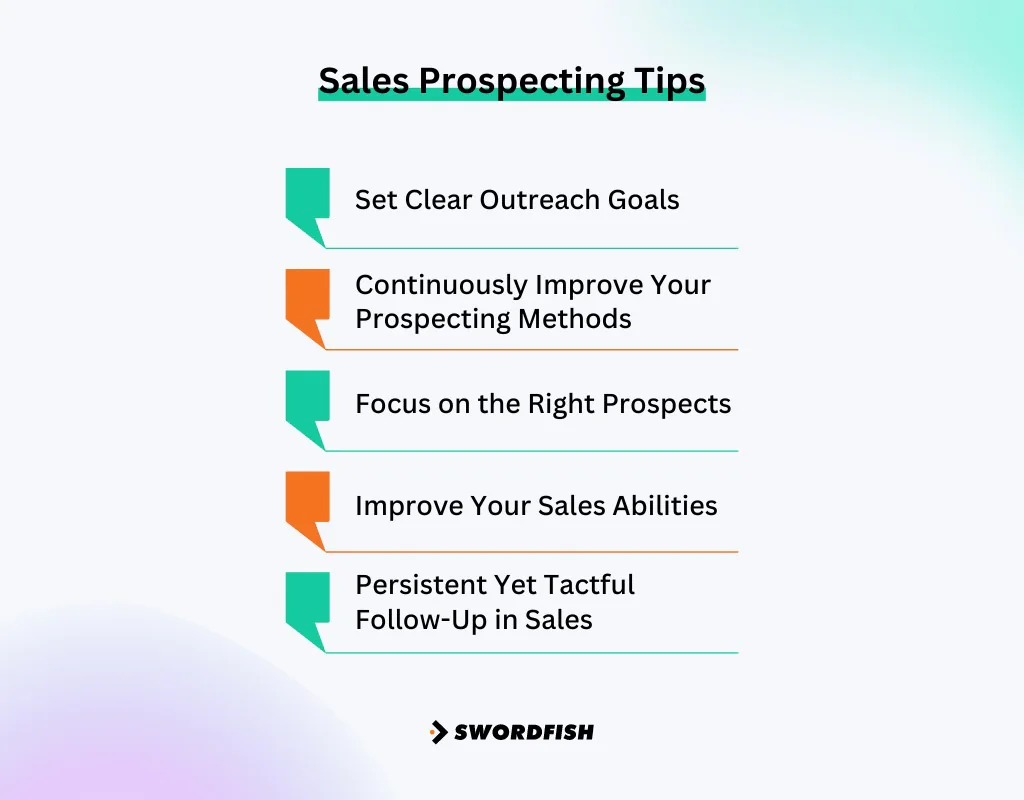
Looking to boost your leads through sales prospecting? Here are five practical tips:
Set Clear Outreach Goals
It’s often said that sales are all about numbers. While reaching out to many prospects is important, focus more on the process than just the end goal. Set specific targets for daily, weekly, and monthly outreach. Then, work diligently to meet these targets.
Continuously Improve Your Prospecting Methods
Don’t just go through the motions with your outreach. Pay close attention to what’s working. Ask yourself: Which emails are getting responses? Which social media messages engage prospects? Which calls lead to meaningful conversations?
Most importantly, identify the tactics that turn prospects into leads. Continuously refine your approach based on these insights.
Focus on the Right Prospects
After asking your qualifying questions, you’ll have two groups of leads: those who aren’t a good fit and potential sales prospects. Prioritize your conversations to focus on the most promising leads first. It helps ensure you don’t waste time on less interested prospects while your best leads lose interest.
Lead scoring is a useful tool here. It involves using data on buying intent and customer information to identify the most interested leads. To create a basic lead scoring system, look at data from past leads who became customers. Ask yourself:
- What characteristics did these customers have that led to their purchase?
- What common traits do your customers share?
- What similarities do you see in leads that don’t often convert?
Improve Your Sales Abilities
Many believe that being good at sales is a natural talent. While some people are indeed natural salespeople, anyone can learn to sell effectively with dedication and effort. Start by investing in resources like sales books, courses, seminars, conferences, and coaching.
Even beginning with small steps can make a big difference.
Persistent Yet Tactful Follow-Up in Sales
My approach to follow-up is straightforward: I continue until I receive a clear response. However, it’s important not to become the sales rep who’s overly persistent to the point of annoyance.
If a prospect shows some interest, keep the follow-up going until they give a definite yes or no. You can simplify your follow-up process with these follow-up email templates, created to keep the conversation going.
Here’s how to do it effectively:
- Be concise and positive in your communication.
- Make your email subject lines relevant and compelling to them.
- Use automation tools to manage follow-ups efficiently.
Another strategy in sales prospecting involves revisiting lost deals. If you’ve established a good connection with your contact, stay in touch. Their circumstances, like budget or timing, might change, making them ready to finalize the deal later.
What are the Reasons for Lead Generation and Prospecting?
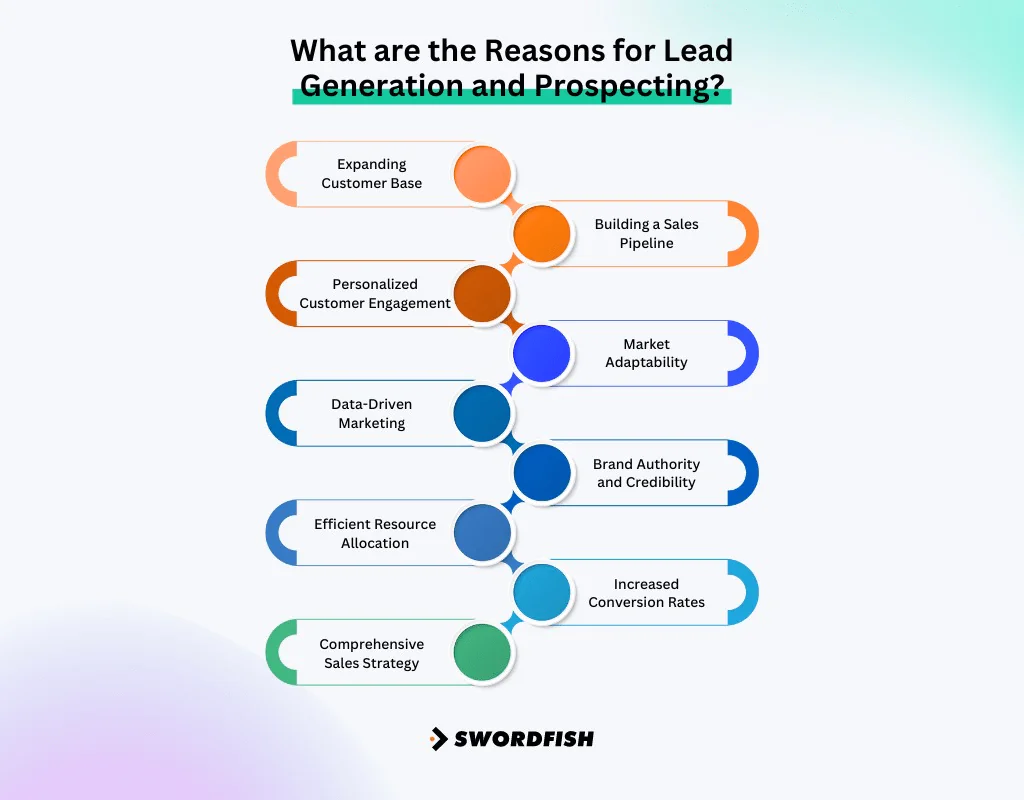
Lead generation and prospecting are key parts of a good sales and marketing plan. They have different but connected roles in finding and winning over potential customers.
Expanding Customer Base
Lead generation is important for reaching more people and drawing in potential customers. It makes people aware of a business’s products or services, even if they didn’t know about the brand before.
Building a Sales Pipeline
Both lead and sales generation help create a strong sales pipeline. Lead generation gathers many potential customers. Prospecting then focuses on finding those most likely to buy.
Personalized Customer Engagement
Prospecting allows sales teams to connect with potential customers in a more personal way. They can learn about their specific needs and communicate in a way that builds stronger relationships.
Market Adaptability
Prospecting helps businesses keep up with market trends and changes in what consumers want. By updating their prospecting strategies, companies can stay relevant and target their sales efforts better.
Data-Driven Marketing
Lead generation gives valuable information about what customers like and how they behave. This data is key for shaping marketing strategies and products, leading to happier customers who stay longer.
Brand Authority and Credibility
Good lead generation strategies can build a brand’s authority and trustworthiness. This is vital for long-term success in a competitive market.
Efficient Resource Allocation
Prospecting makes sure marketing and sales resources are used well. By focusing on a specific group of likely buyers, businesses can put their efforts where they’re most likely to pay off.
Increased Conversion Rates
Both lead generation and prospecting aim to boost conversion rates. Lead generation brings in potential customers. Prospecting involves actively working with these leads to turn them into sales.
Comprehensive Sales Strategy
Using both lead generation and prospecting leads to a well-rounded sales strategy. This approach combines the strengths of both methods, ensuring a steady stream of new contacts and chances to make sales.
Should You Invest in Lead Generation vs Prospecting?
Deciding between sales prospecting and lead generation depends on your company’s unique situation. This decision should be made by top-level executives who understand your business model and growth stage.
There’s no one-size-fits-all answer, but if your business involves
- Direct, personalized communication with prospects.
- Long sales cycles with many decision-makers.
- A small company focusing on high-value deals.
Then, sales prospecting might be more suitable. It allows you to focus on specific prospects with customized messages based on their company, role, and challenges.
On the other hand, if
- Your product appeals to a wide audience.
- Your strategy is to let the product sell itself.
In these cases, lead generation could be effective. It’s about reaching as many people as possible and is ideal for businesses where the product drives growth.
The urgency of your sales needs and the current state of your sales pipeline are also important factors. Think of prospecting as a quick energy boost – it can give immediate results. Lead generation, however, is like a long-term nutrition plan. It takes time to see results, but it can lead to a consistent flow of new business.
Combine Sales Prospecting vs Lead Generation for Optimal Results!
Here are some tips for combining these methods effectively:
- Understand Your Ideal Customer: Know who your perfect customers are. This means learning about their traits, behaviors, and problems. This knowledge guides your prospecting and lead generation.
- Tailor Your Approach: Match your outreach to your ideal customer profiles. Change your messages, content, and methods to connect better with potential leads.
- Use Various Channels: Reach out through different ways like email, phone, social media, and webinars. Each channel has its strengths, like personal touch (phone) or wide reach (social media). Using a mix helps you meet different preferences of your potential leads.
- Use a CRM System: A Customer Relationship Management system helps you keep track of prospects and leads. It stores all information and interactions, giving you a complete view of each lead’s journey. This helps you make better decisions and follow up in a more personalized way.
- Prioritize with Lead Scoring: Use a system to score your leads. This helps you focus on the most promising ones.
- Keep Engaging with Leads: Use a lead nurturing system to keep in touch with leads until they’re ready to buy. Regular, relevant content keeps your brand in their minds.
Avoid These Common Mistakes
When working on lead generation and prospecting, make sure to avoid these pitfalls:
In Lead Generation —
Don’t Skip Lead Qualification
Without a clear process to qualify leads, you might end up with many leads that aren’t a good fit.
Keep Nurturing Your Leads
If you don’t regularly follow up or share relevant content, your leads might lose interest or forget about your products or services.
Use Multiple Channels
Depending only on one or two ways to generate leads can limit your reach. Use a variety of methods and platforms to connect with more people and reduce the risk of relying too much on one source.
In Prospecting —
Personalize Your Approach
Sending the same message to everyone can turn potential customers away. Tailor your messages to each prospect’s specific interests and needs.
Do Your Research
Without knowing your target audience or market well, your efforts might not align with what the prospects need or want.
Avoid Being Too Aggressive
Pushing too hard for a sale can put people off. Excessive follow-ups or high-pressure tactics can harm your relationships and trust with potential customers.
Swordfish AI: Simplifying Lead Generation and Prospecting
Lead generation and prospecting are two key aspects of sales and marketing. And Swordfish AI stands out as a tool that simplifies both these processes. Our platform stands out with a unique feature: access to exclusive cell phone numbers coupled with a proprietary cell phone verification system.
It’s particularly beneficial for sales teams focusing on targeted prospecting, allowing for personalized engagement and efficient outreach. Additionally, Swordfish boasts access to over 3.5 billion data profiles, providing a vast database of contact information.
This extensive database is invaluable for lead generation, enabling marketers to cast a wide net and connect with a broader audience. By combining these powerful features, Swordfish AI improves lead generation, prospecting, and drives business growth.
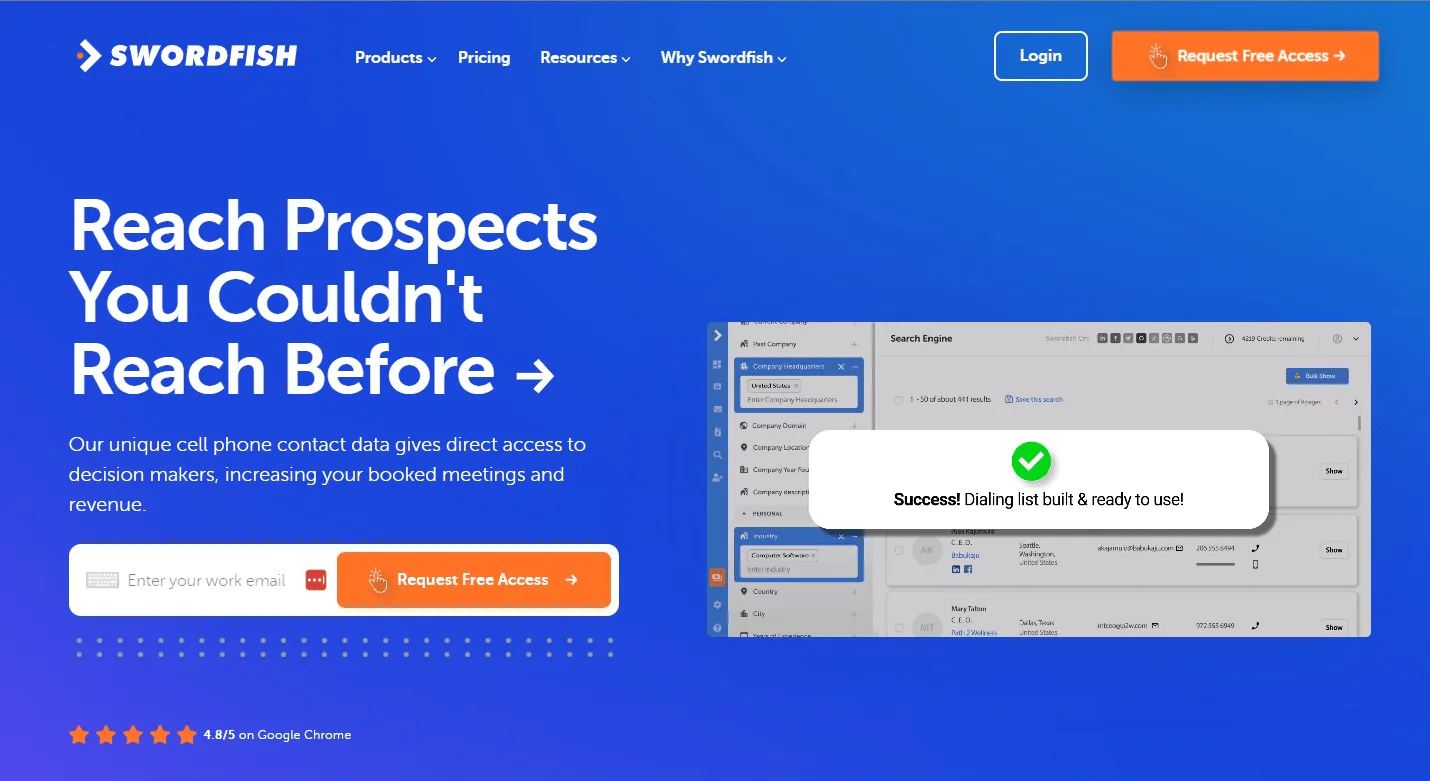
Features of Swordfish AI
Swordfish AI comes with several features —
Chrome Extension
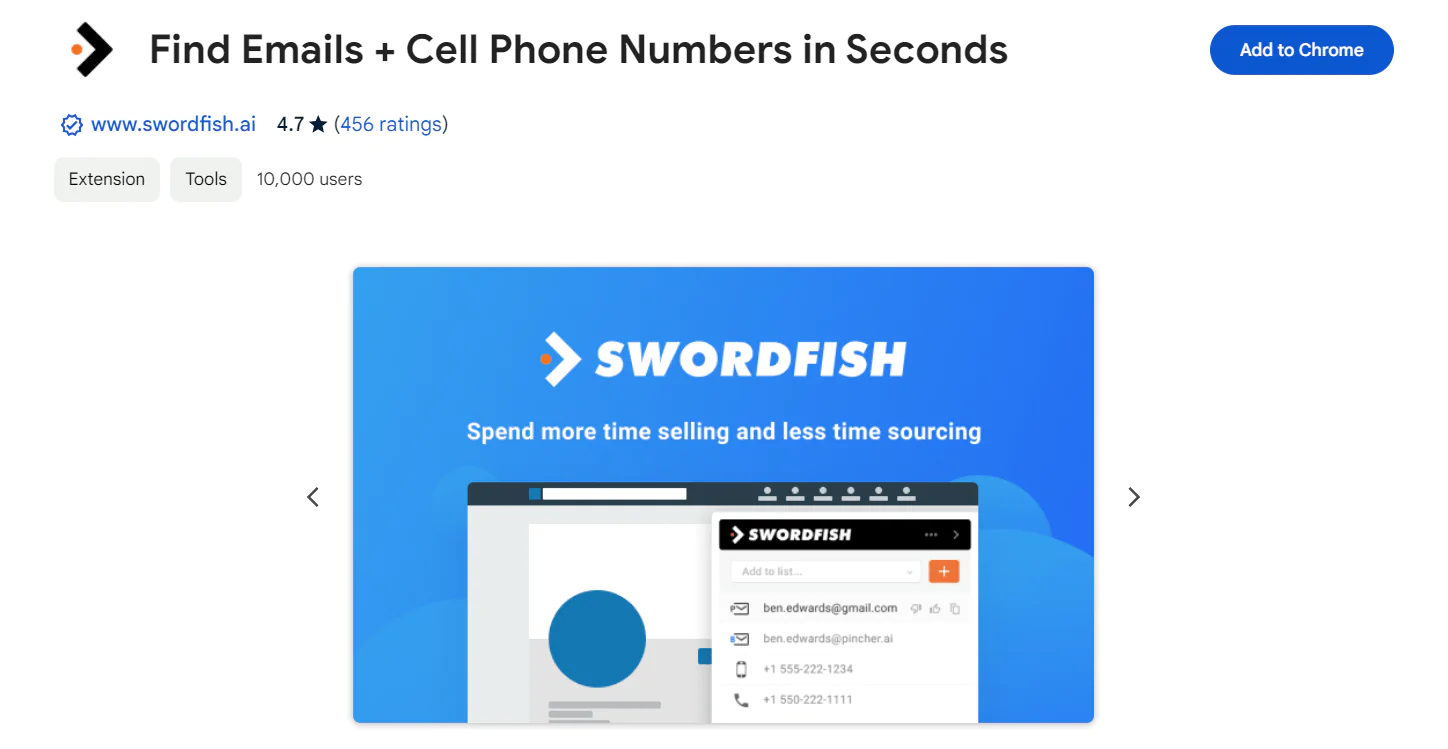
Our tool makes it easy to find people’s contact details on websites like LinkedIn and Facebook. It helps you quickly get the information you need.
Prospector Tool
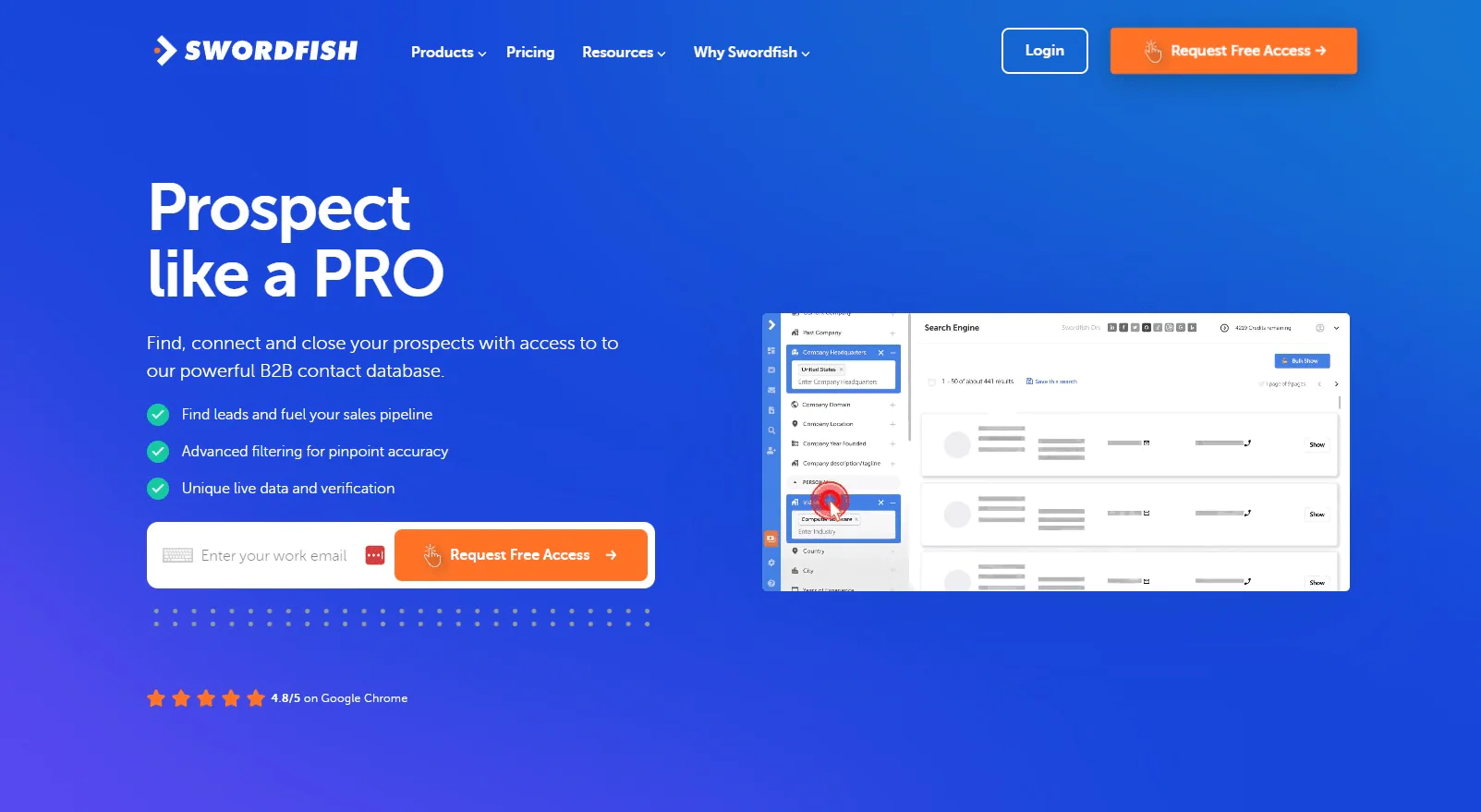
With the Prospector tool, you can find potential customers like an expert. It helps build your list of contacts for calls and emails quickly and accurately.
File Upload for CRM
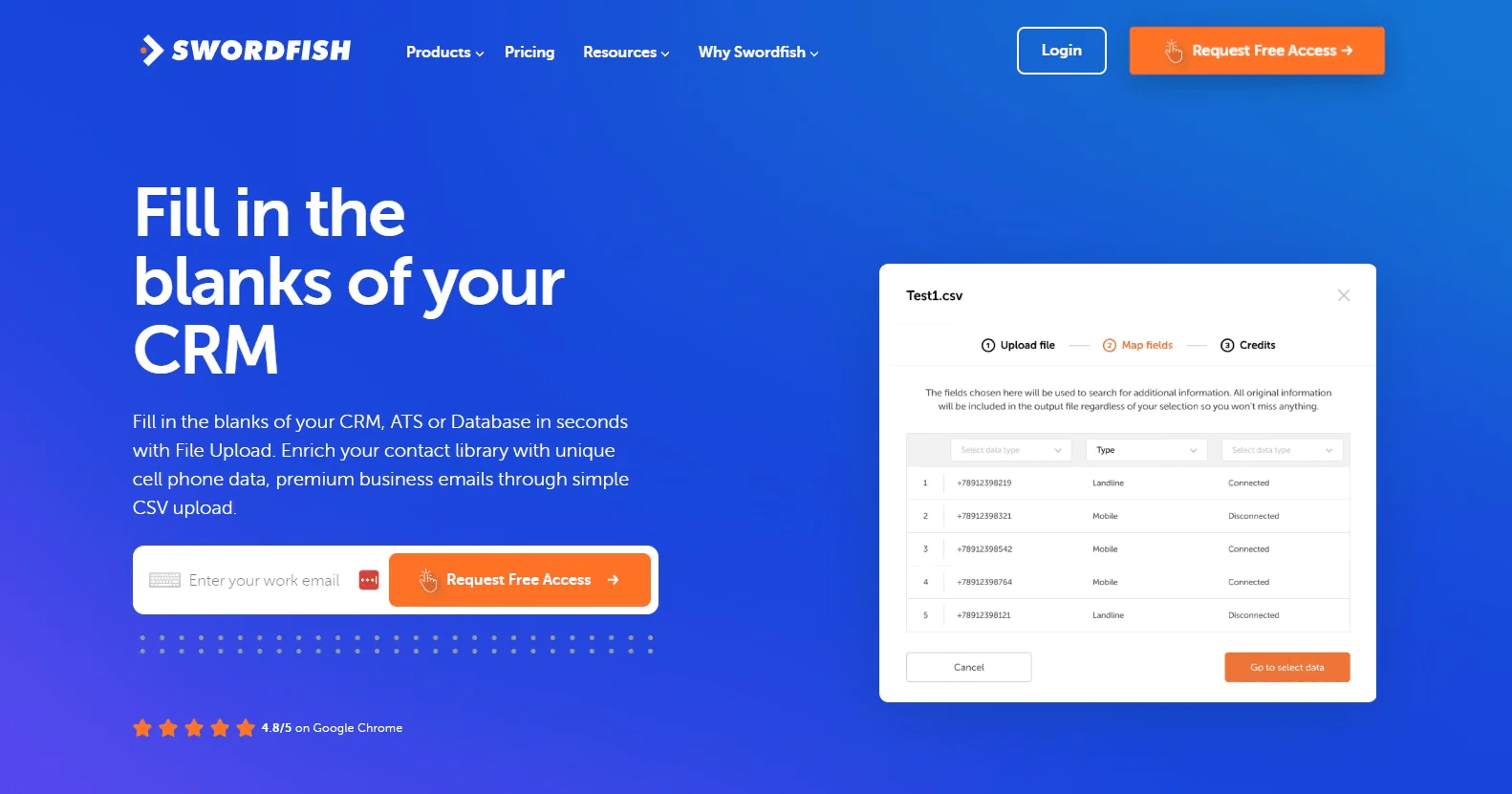
You can upload a file to Swordfish AI, and it will add any missing phone numbers and emails. This improves your customer data.
Reverse Search
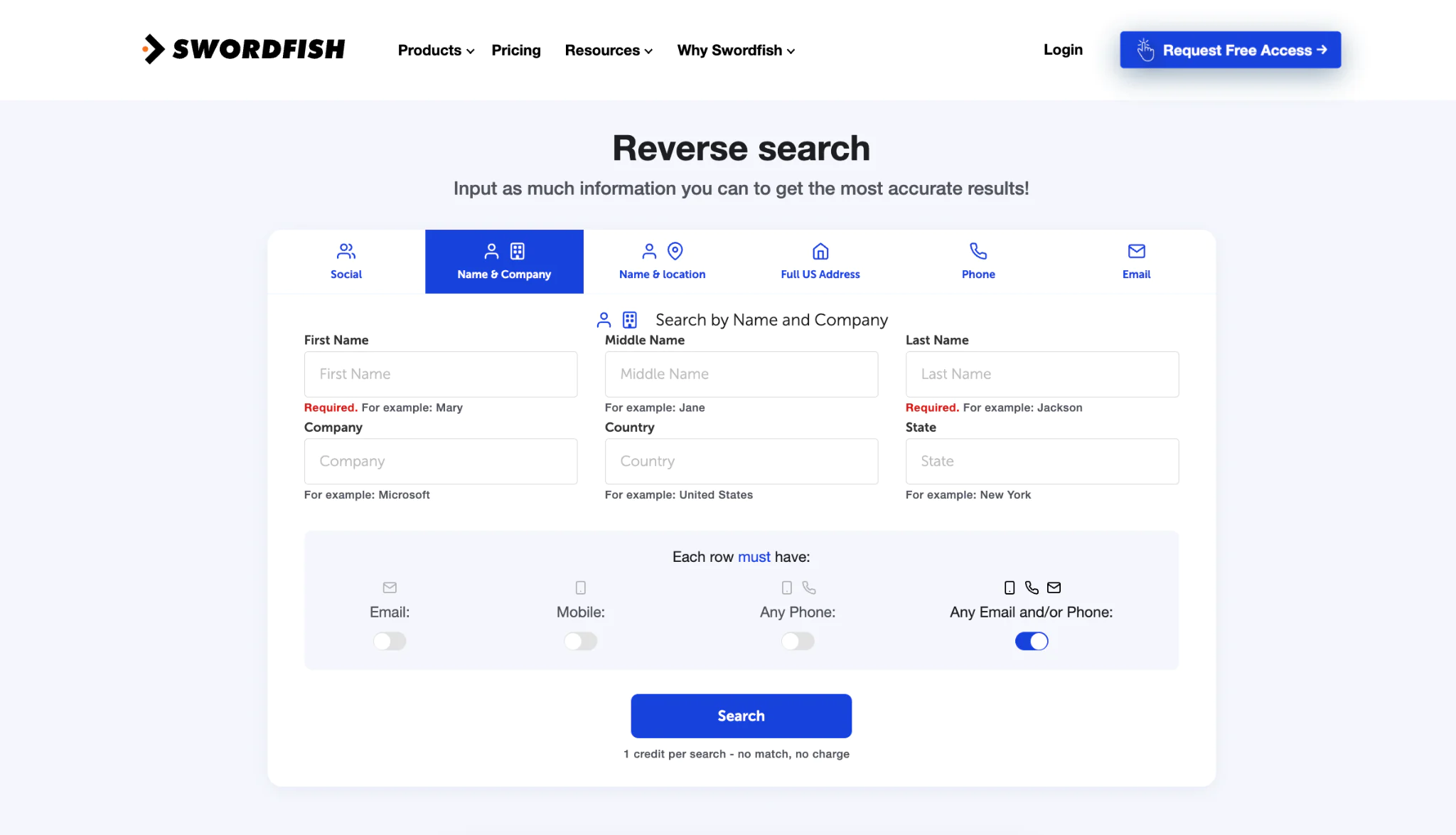
We let you search for people using details like their name, company, or email. It’s a simple way to find and connect with potential customers.
API Integration
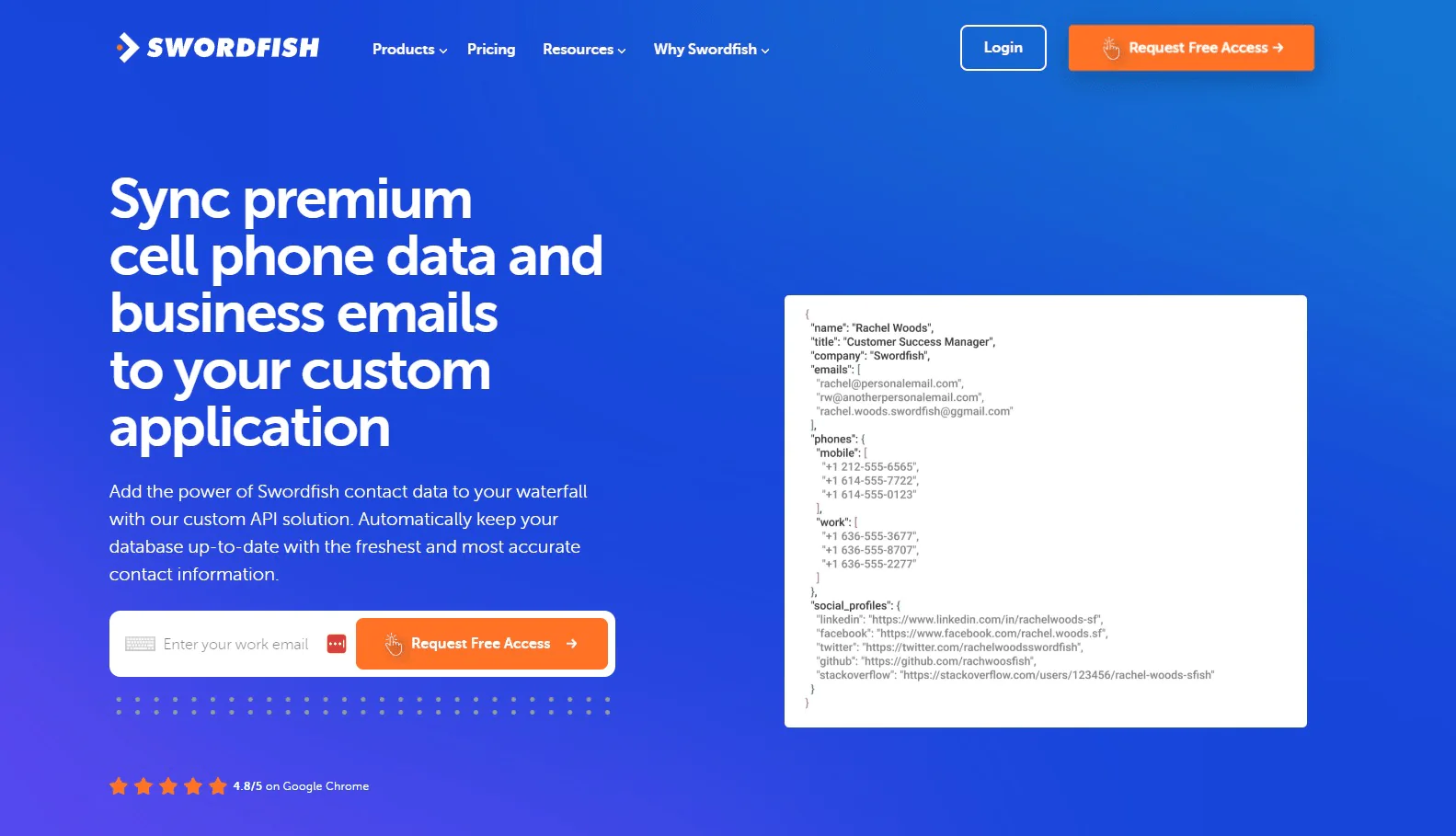
Swordfish AI can connect with your software, allowing you to add specific data. This is great for businesses with their own software systems.
Bombora® Intent Data
Our tool allows you to find businesses that are ready to make a purchase. This feature uses special data to help you find these potential buyers.
Conclusion
We’ve seen that lead generation and prospecting are different. They both find and grow new customer bases but in unique ways. Although they overlap, understanding their differences can boost sales.
Lead generation is about reaching many people to get their contact details. On the other hand, prospecting involves targeted communication with people ready to buy. A good sales plan uses both. Lead generation expands your audience, and prospecting turns them into customers.
Now, with a clear idea of lead generation vs prospecting, take a fresh look at your sales approach. Think about how focusing more on either lead generation or prospecting could help. The right balance in your sales pipeline can help you beat your revenue targets and stand out from the competition.
With Swordfish AI, you can discover contacts and generate leads effortlessly. Start connecting with key decision-makers today – your next big opportunity is just a click away with Swordfish AI!
FAQs
Is a prospect the same as a lead?
A lead is someone who might be interested in your product but hasn’t been evaluated yet. In contrast, a prospect is a lead who has been checked and fits into your sales process. To change a lead into a prospect, you need to see if what you offer can solve their problem.
What is the first step before finding a prospect?
In the sales cycle, you start with leads, then identify prospects, turn them into opportunities, and finally, make them customers. Remember, not all leads become prospects, and not every prospect begins as a lead.
Which comes first, a prospect or a lead?
Leads are the first step. They are potential customers. After you check if a lead is a good fit, they become a prospect. When a prospect shows real interest in buying, they turn into an opportunity and move further in the sales process.

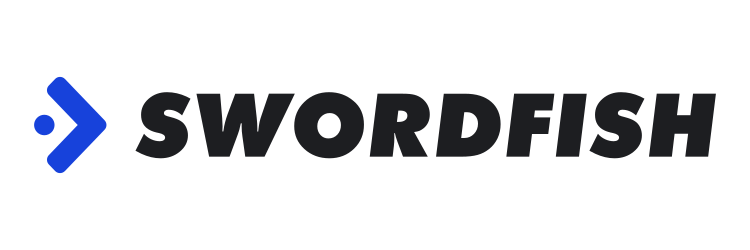
 View Products
View Products


